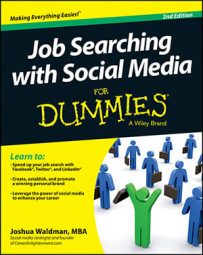Your personality goes a long way in helping you stand out in your job search. You know the old saying: Someone else will always be more experienced, more educated, or more qualified than you are, but there’s never going to be another you.
Don’t fall victim to the common notion that in order to be professional, you have to whitewash your personality. Hiring managers actually place great value on video résumés because video demonstrates a candidate’s professional presentation skills and demeanor. Having said that, don’t freak out.
This does not mean that you should untuck your shirt and pepper your story with profanity; bringing your personality to the table simply means being yourself. And this doesn’t mean telling personal stories. Your video résumé isn’t the place for that unless the personal story adds significance to a professional one.
Here are some tricks to help you bring more personality into your video:
Collect video testimonials from co-workers, managers, or customers — past or present. Make sure you get their permission to use this footage in any way you want. Later, when you edit your video résumé and prepare to post it, you can simply splice in these testimonials to double the film’s impact and demonstrate that other people have a positive opinion of you.
Express your passions. Talk about what work you love to do and why you love it. If possible, demonstrate this passion on-screen. Remember that video allows you to show off your presentation skills. Speaking faster and becoming more animated during this portion can show the viewer how much you care about the subject.
Use your sense of humor. You can always edit out a bad joke later, but the overall feeling that you’re having fun with the process can still come across indirectly. Remember those old Jackie Chan movies where, at the end, you see outtakes of Jackie being a total goofball? The fun that he has during filming comes across in the final edited film even without those deleted scenes.
Interact with others. You may feel more comfortable with another person on the camera. Try setting up a mock TV interview with a friend or co-worker. Alternatively, have someone off-camera ask you questions and just film your replies. You can edit out the questions later, leaving behind your naturally delivered answers.
Be yourself. Unlike scripted theater, the main point of storytelling is to appear natural and spontaneous, yet still prepared, skilled, and professional. Writing out a script is fine, but you don’t need to stick to it rigidly.
Be confident. The most confident people are relaxed. Keep your arms and legs uncrossed. Smile, but don’t force it. Make eye contact but don’t stare. Vary your rate of speech. Use your hands to emphasize a point but keep in mind that too much hand movement can be distracting.
Always get a second opinion from a professional in your field about your final product before you publish it. Ask your reviewer whether the video captures your personality while still portraying you as professional. You want your reviewer to say, “Yeah! That’s exactly what working with you is like.”

